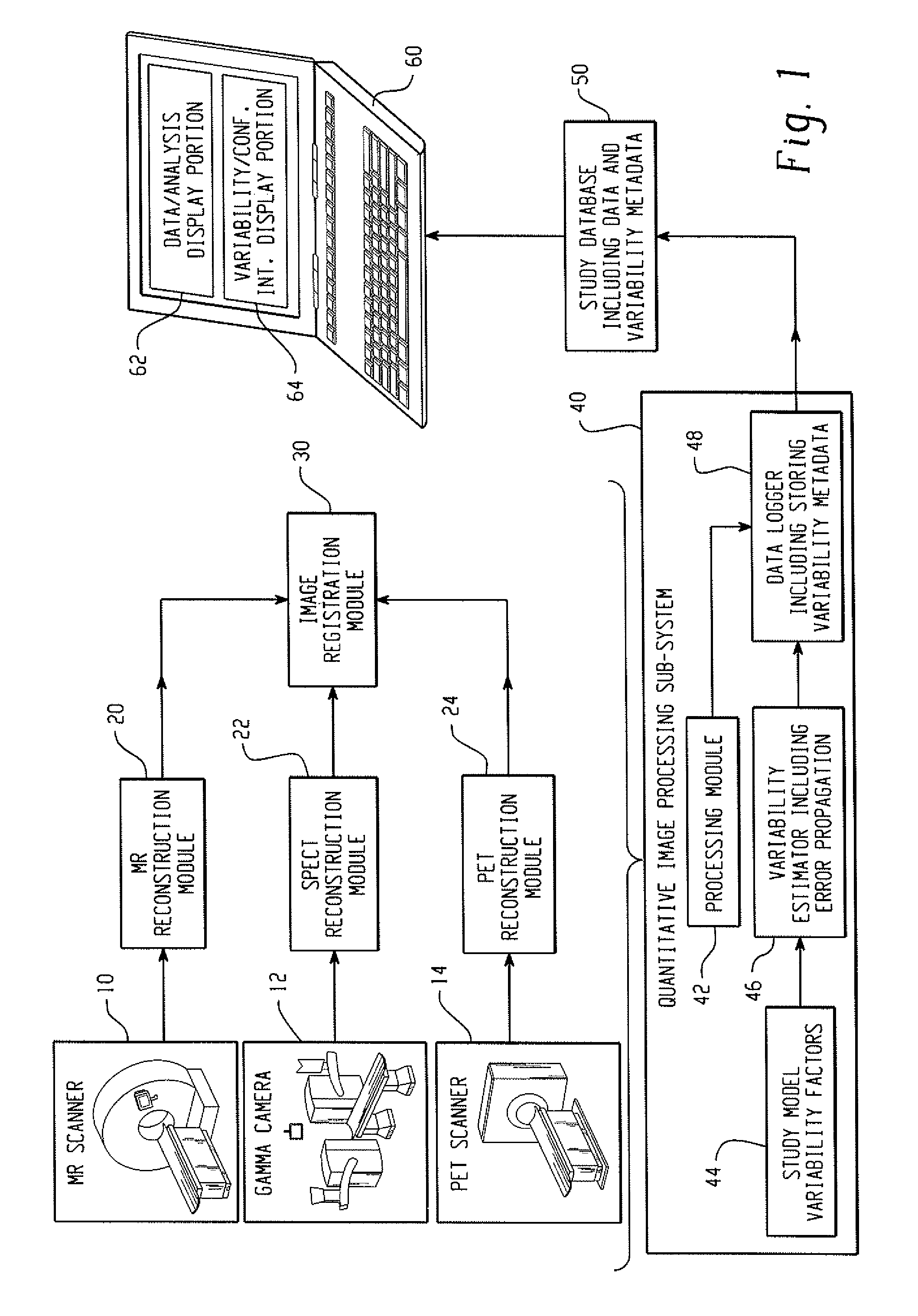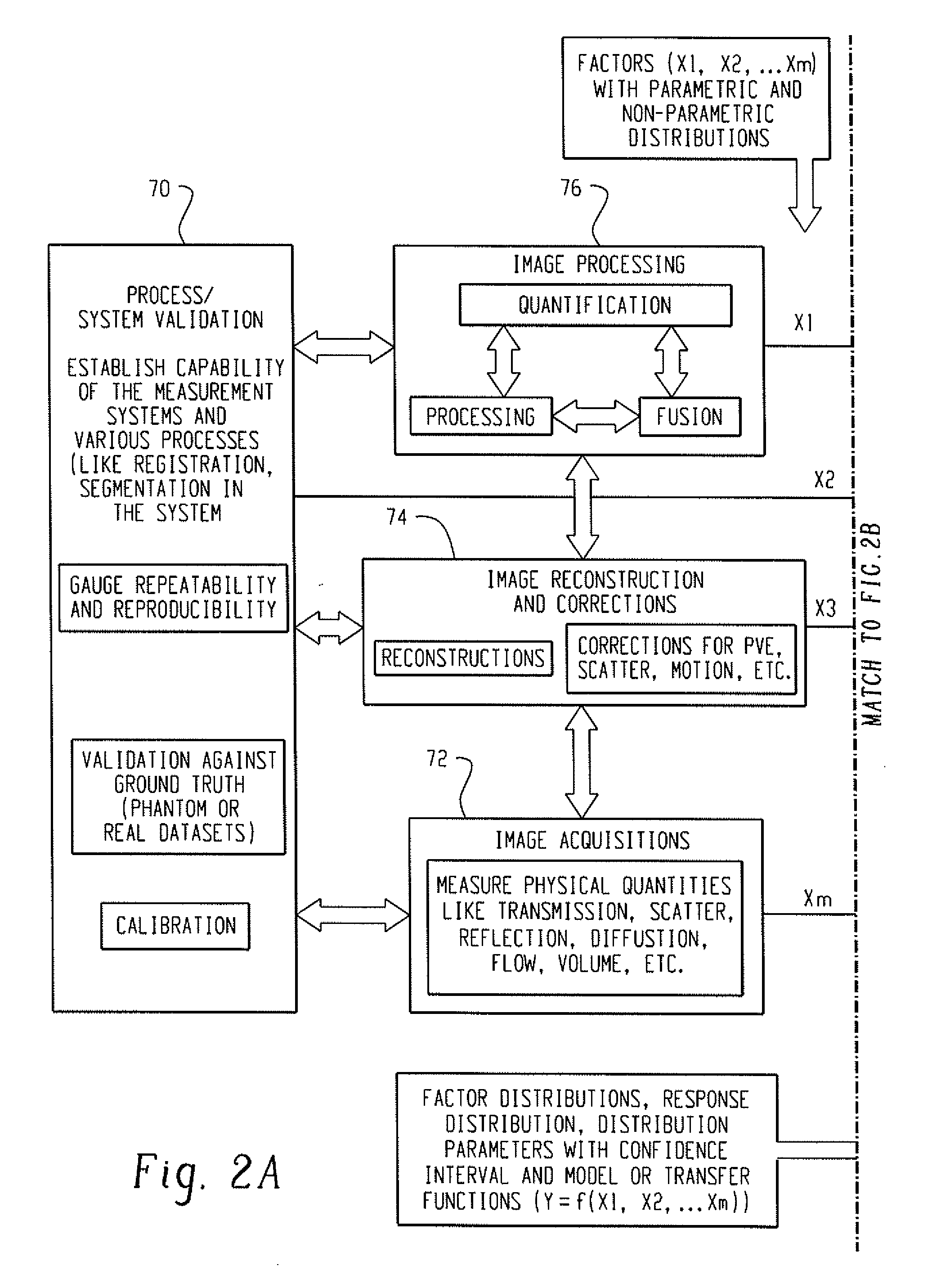Quantitative clinical and pre-clinical imaging
a quantitative, clinical technology, applied in the field of medical science, can solve the problems of heightened problems, inability to accurately predict the effect of clinical outcomes, so as to improve the efficiency of design, improve the value of clinical outcomes, and improve the efficiency of image registration
- Summary
- Abstract
- Description
- Claims
- Application Information
AI Technical Summary
Benefits of technology
Problems solved by technology
Method used
Image
Examples
Embodiment Construction
[0024]With reference to FIG. 1, a clinical or preclinical imaging system includes an image acquisition subsystem including a data acquisition element and an image reconstruction element cooperating to generate clinical or preclinical images of clinical or preclinical subjects. In illustrative FIG. 1, the clinical or preclinical imaging system includes three data acquisition elements, namely a magnetic resonance (MR) scanner 10, a gamma camera 12 for single photon emission computed tomography (SPECT) data acquisition, and a positron emission tomography (PET) scanner 14. The illustrative clinical or preclinical imaging system also includes three corresponding image reconstruction elements, namely an MR reconstruction module 20, a SPECT reconstruction module 22, and a PET reconstruction module 24. These illustrative components are examples; more generally, the clinical or preclinical imaging system can include as few as a single data acquisition element and corresponding reconstruction...
PUM
 Login to View More
Login to View More Abstract
Description
Claims
Application Information
 Login to View More
Login to View More - R&D
- Intellectual Property
- Life Sciences
- Materials
- Tech Scout
- Unparalleled Data Quality
- Higher Quality Content
- 60% Fewer Hallucinations
Browse by: Latest US Patents, China's latest patents, Technical Efficacy Thesaurus, Application Domain, Technology Topic, Popular Technical Reports.
© 2025 PatSnap. All rights reserved.Legal|Privacy policy|Modern Slavery Act Transparency Statement|Sitemap|About US| Contact US: help@patsnap.com



